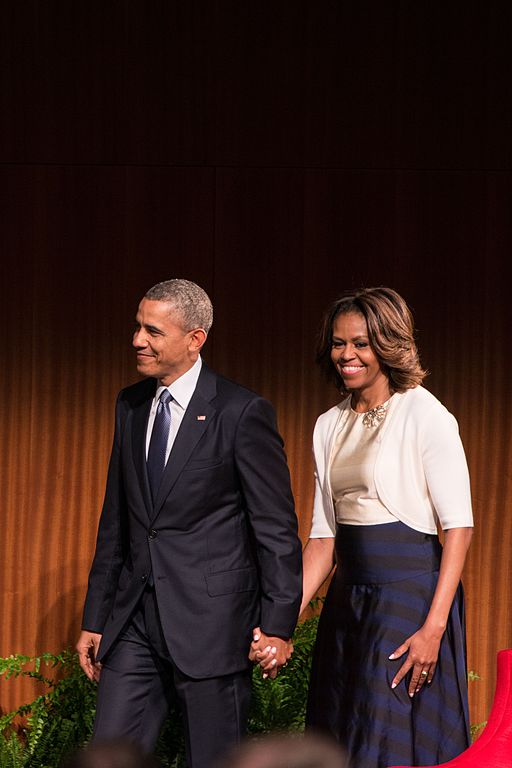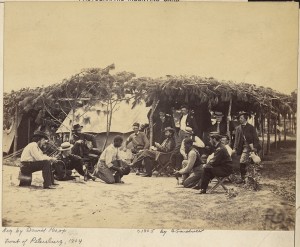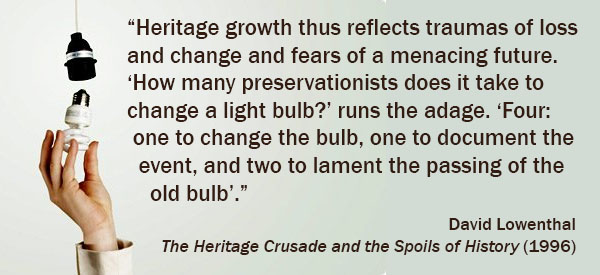 The recent selection of Miss World Japan has created a stir. The BBC headline “Miss Japan Won By Half-Indian Priyanka Yoshikawa” forefronted only the aspect of her heritage that some found problematic because they do not see Yoshikawa as “pure” Japanese. Last year’s crowning of Ariana Miyamoto as Miss Japan (in the Miss Universe franchise) faced similar responses, as Miyamoto’s parents are Japanese and African-American. While it is easy to see these controversies as signs of the insularity and even xenophobia of some Japanese (which ironically reinforces particular stereotypes of Japan as foreign), that designation is unfair in two ways. First, these two Japanese women and their supporters have challenged such attitudes in Japan, thus refuting the generalizability of the stereotype. Second, such preferences for ethnic purity among some in Japan are not as different from common attitudes in the United States. Continue reading “Miss Japan and the Structures We Inhabit”
The recent selection of Miss World Japan has created a stir. The BBC headline “Miss Japan Won By Half-Indian Priyanka Yoshikawa” forefronted only the aspect of her heritage that some found problematic because they do not see Yoshikawa as “pure” Japanese. Last year’s crowning of Ariana Miyamoto as Miss Japan (in the Miss Universe franchise) faced similar responses, as Miyamoto’s parents are Japanese and African-American. While it is easy to see these controversies as signs of the insularity and even xenophobia of some Japanese (which ironically reinforces particular stereotypes of Japan as foreign), that designation is unfair in two ways. First, these two Japanese women and their supporters have challenged such attitudes in Japan, thus refuting the generalizability of the stereotype. Second, such preferences for ethnic purity among some in Japan are not as different from common attitudes in the United States. Continue reading “Miss Japan and the Structures We Inhabit”
Strategic Ideologies
Prompted by the discussion surrounding Rachel Dolezal’s NAACP resignation, this series of posts is about how and when we take performativity seriously…, and when it bows to interests in historical or experiential specificity.
Race, as many have pointed out for years, is not biological. This point raises questions about the basis on which it is determined. Is it ancestry, appearance, cultural practice, or something else? That complicated question has come to greater prominence in light of the media circus around Rachel Dolezal and her assertion of an African-American identification. While discussions of Dolezal often focus on the process of self-identification and strategic choices made in relation to that self-identification, I want to focus, instead, on the strategic nature of the act of ascribing identification to someone else. Continue reading “Strategic Ideologies”
Fabricating Origins
 We used a typescript copy of my small, forthcoming edited volume, Fabricating Origins (due out this summer), in my upper-level seminar this semester, a course devoted to examining origins narratives — seeing those various sorts of “In the beginning” tales we so commonly tell as not being about the past their tellers claim to narrate but all about the present and future hopes of the tale’s narrator. The course started out with Barry Levinson’s endearing film “Avalon” (but one that opens the way to discussing hidden fractures in the life of any social group) and then a couple weeks later we watched Woody Allen’s “Midnight in Paris” (in which the notion of nostalgia is problematized so nicely) — both setting the tone for the course. Students kept notebooks in the class (something I learned from Jonathan Z. Smith and which I’ve incorporated into most of my upper-level seminars), and they handed them into me last week; it was interesting to see, from some of their notes, how effective the films were in framing the problem of the course. And then, eventually, we worked our way to the ten revised posts from this site, collected together in the above-named volume, complete with commentaries on each by a group of young scholars I’ve mostly met online through social media. And, like the movies, the volume seems to have worked well with students, to press home the point of the course.
We used a typescript copy of my small, forthcoming edited volume, Fabricating Origins (due out this summer), in my upper-level seminar this semester, a course devoted to examining origins narratives — seeing those various sorts of “In the beginning” tales we so commonly tell as not being about the past their tellers claim to narrate but all about the present and future hopes of the tale’s narrator. The course started out with Barry Levinson’s endearing film “Avalon” (but one that opens the way to discussing hidden fractures in the life of any social group) and then a couple weeks later we watched Woody Allen’s “Midnight in Paris” (in which the notion of nostalgia is problematized so nicely) — both setting the tone for the course. Students kept notebooks in the class (something I learned from Jonathan Z. Smith and which I’ve incorporated into most of my upper-level seminars), and they handed them into me last week; it was interesting to see, from some of their notes, how effective the films were in framing the problem of the course. And then, eventually, we worked our way to the ten revised posts from this site, collected together in the above-named volume, complete with commentaries on each by a group of young scholars I’ve mostly met online through social media. And, like the movies, the volume seems to have worked well with students, to press home the point of the course.
And that point was…?
Don’t look in the distance, or the past, at whatever someone is gesturing toward; rather, keep your eyes on the one trying to direct, perhaps even to force, your gaze. Continue reading “Fabricating Origins”
Heritage and Cockfighting
 How do we determine if cockfighting is acceptable? Matt Bevin, a Senate candidate in Kentucky who is vying to unseat Mitch McConnell, has made contradictory assertions after speaking at a rally to legalize cockfighting. While he has apologized for speaking at the rally, asserting that he was not aware of the rally’s cause, he has balanced his denunciation of cockfighting with reference to claims that it is part of America’s heritage. Continue reading “Heritage and Cockfighting”
How do we determine if cockfighting is acceptable? Matt Bevin, a Senate candidate in Kentucky who is vying to unseat Mitch McConnell, has made contradictory assertions after speaking at a rally to legalize cockfighting. While he has apologized for speaking at the rally, asserting that he was not aware of the rally’s cause, he has balanced his denunciation of cockfighting with reference to claims that it is part of America’s heritage. Continue reading “Heritage and Cockfighting”
Trickle-Down Social Change?
 This is an interesting news story, for it prompts us to ask about what constitutes a social change that’s worth calling a change: opening up elite institutions to non-traditional or minority members or changing the conditions that require elite institutions in the first place? Continue reading “Trickle-Down Social Change?”
This is an interesting news story, for it prompts us to ask about what constitutes a social change that’s worth calling a change: opening up elite institutions to non-traditional or minority members or changing the conditions that require elite institutions in the first place? Continue reading “Trickle-Down Social Change?”
Whose Culture?
 The New York Times headline Sunday “In China, ‘Once the Village is Gone, The Culture is Gone’” certainly grabbed my attention for its construction of “China” and “culture”. The article and accompanying video decry the loss of villages across China due to urbanization. While many migrate for jobs, some are forced to leave their village due to development plans. Since the state owns the land, the government can force people to move to make room for proposed developments, a golf course in this example. Continue reading “Whose Culture?”
The New York Times headline Sunday “In China, ‘Once the Village is Gone, The Culture is Gone’” certainly grabbed my attention for its construction of “China” and “culture”. The article and accompanying video decry the loss of villages across China due to urbanization. While many migrate for jobs, some are forced to leave their village due to development plans. Since the state owns the land, the government can force people to move to make room for proposed developments, a golf course in this example. Continue reading “Whose Culture?”
Who Are You? I’m Greek
 “Who Are You?” asks members of Culture on the Edge to reflect
“Who Are You?” asks members of Culture on the Edge to reflect
on one of their own many identities (whether national, gendered,
racial, familial, etc.), theorizing at the same time the self-
identification that they each chose to discuss.
Although we all have many identities my national identity is what comes first in mind especially now that I’m away from Greece. I suppose when you are asked to remember the first time you realized you were of a certain nationality is not that easy. I’m Greek! I was born in Athens and grew up in Thessaloniki and it sure fills me with pride when I’m asked to show around and talk about my ancient Greek heritage, which I see is of great interest to my North American friends and not only. Of course this pride has its ups and downs, especially when I’m asked about the current politico-economic situation in Greece…. Anyways! Continue reading “Who Are You? I’m Greek”
The Strong Silent Type
 Did you catch this episode of The Sopranos (back in 2002 [Season 4, episode 3])? Sure, there’s a fair bit of swearing in the clip below, but we’re all adults here, right? Continue reading “The Strong Silent Type”
Did you catch this episode of The Sopranos (back in 2002 [Season 4, episode 3])? Sure, there’s a fair bit of swearing in the clip below, but we’re all adults here, right? Continue reading “The Strong Silent Type”
On Heritage
 Read more.
Read more.
All-American Fireworks, Hamburgers, Frankfurters and Yoga

With all-American Fourth of July festivities like fireworks, frankfurters, and hamburgers, we continually construct our identification with an imagined community, as Benedict Anderson emphasized thirty years ago. Like the nation, the values that we associate with the United States, (e.g., democracy, equality, and liberty) are imagined constructs whose conceptions shift over time.
The United States is a nation of immigrants with the Statue of Liberty welcoming the “huddled masses” one of those frequently invoked traits. Beyond questions over the place of Native Americans in the nation of immigrants and contemporary debates over “immigration reform” and “border security,” the recent court case involving a yoga program in the Encinitas, California, public schools (which I have discussed previously here and here) illustrates the imagined nature of this national trait in a surprising way. Continue reading “All-American Fireworks, Hamburgers, Frankfurters and Yoga”
